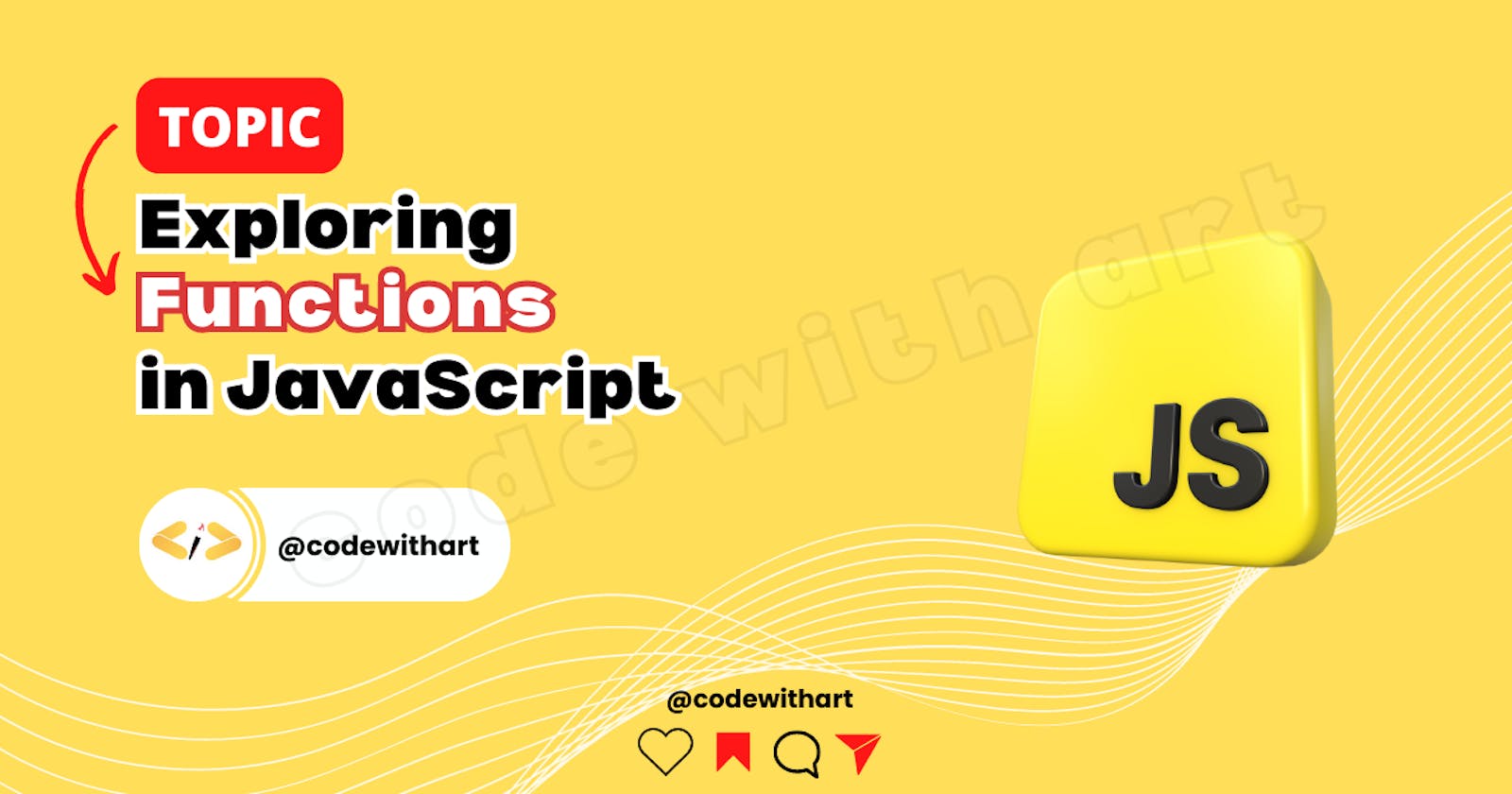Day 5👨💻🔥, Exploring Functions in JavaScript: Unleashing the Power of Reusability
Welcome, young programmers. Functions are like superheroes in the realm of JavaScript, performing specialized jobs. They encapsulate code blocks, allowing us to reuse and organize our code more efficiently.
In this blog article, we'll delve into the interesting realm of functions, learning about their definition, methodology, and real-world applications. By the end of this article, you'll have a better understanding of how to use functions to make your code more modular and efficient.
Let's get started!
Understanding Functions:
Definition: A function is a reusable piece of code that performs a certain activity or computes a value. It can accept arguments as input and optionally return a value. Syntax of Functions: The function keyword is used to define functions in JavaScript, followed by a name, parenthesis for parameters (if any), and curly braces { } to enclose the function body.
Types of Functions:
Named Functions: Named functions are given a name and may be accessed using that name. They are often utilized in standalone operations.
function greet(name) {
return "Hello, " + name + "!";
}
console.log(greet("John")); // Output: Hello, John!
Anonymous Function (Function Expression): Anonymous functions, often known as function expressions, lack a name. They are frequently associated with variables or used as callbacks.
const sayHello = function(name) {
return "Hello, " + name + "!";
};
console.log(sayHello("Alice")); // Output: Hello, Alice!
Arrow Function: Arrow functions give a short syntax for creating functions that use the arrow (=>) notation. They can in handy for inline function expressions.
const add = (a, b) => a + b;
console.log(add(5, 3)); // Output: 8
Function with Default Parameters:
function greet(name = "code") {
return "Hello, " + name + "!";
}
console.log(greet()); // Output: Hello, code!
console.log(greet("Art")); // Output: Hello, Art!
Higher-Order Function (Function that accepts another function as an argument):
function calculate(num1, num2, operation) {
return operation(num1, num2);
}
function add(a, b) {
return a + b;
}
console.log(calculate(5, 3, add)); // Output: 8
These examples show the various sorts of functions and how they may be utilized in JavaScript. Feel free to play around with them and learn more about each function type.
Important Function Methods:
Using Arguments: The arguments object provides access to the parameters of a function even if they are not explicitly stated in the function signature.
function sum() {
let total = 0;
for (let i = 0; i < arguments.length; i++) {
total += arguments[i];
}
return total;
}
Return Statement: The return statement indicates the value that a function should return. It ends the function execution and returns the value to the caller code.
function multiply(a, b) {
return a * b;
}
Real-Time Examples:
Let's explore some real-world examples to see how functions may be employed in real-world scenarios:
Example 1: Calculating the Area of a Rectangle
function calculateArea(length, width) {
return length * width;
}
let rectangleArea = calculateArea(5, 3);
console.log(rectangleArea); // Output: 15
Example 2: Checking if a Number is Even
function isEven(number) {
if (number % 2 === 0) {
return true;
} else {
return false;
}
}
let number = 10;
if (isEven(number)) {
console.log("The number is even.");
} else {
console.log("The number is odd.");
}
Functions are key JavaScript building elements that allow for code reuse and organization. We've looked at the definition of functions, their methods, and real-world applications in this blog article. Understanding how functions operate allows you to write modular, reusable code that will make your programming experience more efficient and pleasant.
Stay tuned for the next blog article in this series, in which we'll go further into more complex ideas and techniques.
Happy coding 👨💻🚀.
Remember to subscribe to remain up to speed on the newest stuff and to broaden your JavaScript knowledge.
